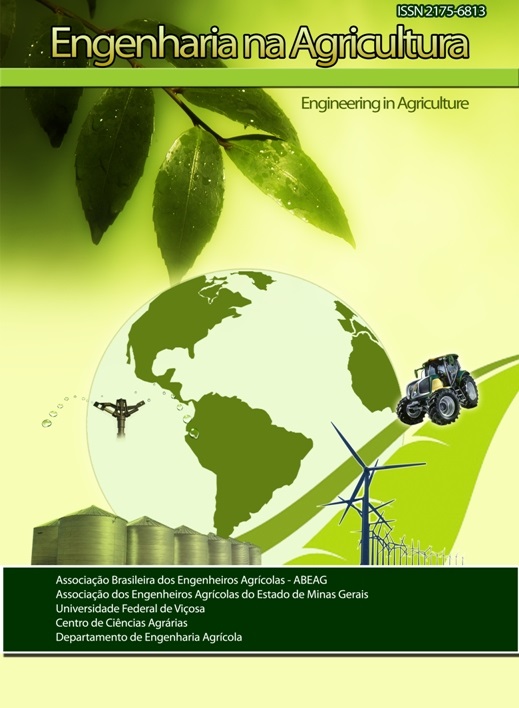PHYSICAL AND CHEMICAL EVALUATION OF SIXTEEN PEACH CULTIVARS DURING THREE HARVESTS
DOI:
https://doi.org/10.13083/reveng.v25i2.712Keywords:
Prunus persica, qualidade, pós-colheita.Abstract
The evaluation of physical and chemical aspects of peach fruits destined to fresh consumption varies between crops. This variation depends on many factors, but mainly on the growth conditions imposed by the environment. The objective of this study was to evaluate the physical and chemical qualities of fruits from sixteen different peach cultivars produced during three seasons in Viçosa-MG. The following cultivars; Aurora 2, Baroness, Biuti, Colibri, Coral, Crystal, Delicious Early, Prince Flower, Joia 4, Lake City, Marli, Iataquera Pearl, Rubimel, Talisman, Tropical and Tropic Beauty were grafted on Okinawa rootstocks at the experimental orchard of the Federal University of Viçosa, Viçosa-MG in 2008. The cultivars were evaluated on color characteristics of the exocarp (b * h °), mesocarp color (b * h °), fruit weight (g) polar diameter (mm) , equatorial diameter (mm), sutural diameter (mm), Firmness pulp (N), soluble solids content (Brix), Vitamin C (mg / 100g), titratable acidity (% malic acid), Carotenoids (mg / 100g ) and ratio (soluble solids content and titratable acidity ratio) during the harvests of 2011, 2012 and 2013. The experiment was carried out in a completely randomized design with sixteen treatments, three replications and 10 fruits per plot. There were differences between the characteristics evaluated from the three seasons, being Flordaprince the cultivar with the most intense exocarp color as well as higher vitamin C content.Downloads
Downloads
Published
How to Cite
Issue
Section
License
Authors who publish with this journal agree to the following terms:
The author(s) authorize(s) the publication of the text in the journal;
The author(s) ensure(s) that the contribution is original and unpublished and that it is not in the process of evaluation by another journal;
The journal is not responsible for the views, ideas and concepts presented in articles, and these are the sole responsibility of the author(s);
The publishers reserve the right to make textual adjustments and adapt texts to meet with publication standards.
From submission, the author is fully conceding the paper's patrimonial rights to the publication, but retaining the owner of its moral rights (authorship and paper's identification) according to Creative Commons Attribution-Noncommercial.








 Licensed by
Licensed by 